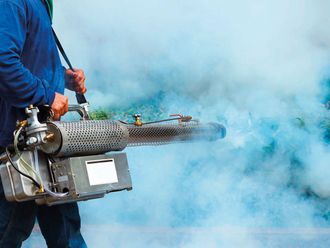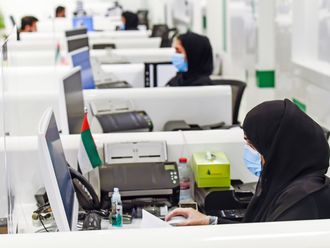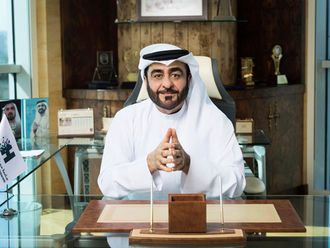SAS: Embassy Siege, a title fit for a paperback fiction with an embossed cover in any high street bookshop, as it is the case with any thing "SAS" (Special Airforce Service) attached to it, is in fact the title of an excellent 90-minute long documentary shown last Thursday on BBC 2, based on the award-winning Peter Taylor's account of the 1980 London Iranian Embassy siege.
It is for the first time in more than two decades that a documentary tried to uncover the truth about what exactly happened inside and outside the embassy during the six-day long and odious siege, and to clear some of political controversies surrounding the "Iron Lady" Margaret Thatcher's instructions that no terrorist should come out alive.
As one of those unfortunate hostages, I was featured in the documentary along with four of my fellow hostages: Police Constable Trevor Lock, BBC sound recordist Sim Harris and BBC news gatherer Chris Cramer and Ahmad Dadgar who was working at the Embassy's medical section.
And for the first time ever two SAS members: the sniper Robin Horsfall and "Tom", a senior anti-terrorist expert negotiator Max Vernon, Richard Hastie-Smith from the Cabinet Office who was in charge of the government crisis management centre (Cobra) and of course P.C. Lock, have been allowed to break their silence.
Just before 11.30 am on Wednesday April 30, six Iranian Arab gunmen from the oil-rich region of Khuzestan (Arabstan) in southern Iran stormed the building at Princes Gate Opposite Hyde Park and controlled it for the next six days.
At that moment, I was introducing myself to the Cultural Attaché Dr Izzati and the Press Attaché Abbas Lavazani, who was a Revolutionary Guards appointee at the embassy. I was then deputy editor of a London-based magazine and a correspondent for the Beirut daily Assafir.
Few minutes later I found myself locked in a room with about 10 Iranian hostages, including two female staff.
In few seconds the door was forced open by one gunman and the two ladies started screaming. Using his revolver, the gunman fired a shot into the ceiling, which controlled the situation.
The gunman, Fawzi Najjad, was the first terrorist I saw. He is the only one to have remained alive and still doing life in prison. I then heard another terrorist giving instruction in Arabic: "Get the ambassador. Don't let him escape." I immediately realised we were into a siege situation.
Harris and Cramer were waiting in the embassy's reception hall to collect their entry visa to travel to Ayatollah Komeini's revolutionary Iran. P.C. Lock, a member of the Diplomatic Protection Force, was drinking thick Iranian coffee, just behind the entrance with the embassy's concierge Abbas, whose life was saved by a five-pence coin he kept in his shirt pocket when it was hit by a bullet during the SAS storming.
The gunmen demanded that 91 prisoners of their comrades be released from Iranian jails within the next 24 hours or they would kill the hostages and destroy the building by explosives. All the gunmen were residents of Iraq as political asylum seekers and belonged to a previously unknown Iraqi-backed group (Political Organisation for Iranian Arabs).
At that stage, the government had no knowledge of a possible Iraqi plot of this magnitude taking place on British soil, particularly as the UK was enjoying excellent relations with Iraq.
"No one knew that Iraq had trained and armed the gunmen to embarrass its enemy Iran," Hastie-Smith says. "No one realised that the drama about to be played out in Princess Gate was a dramatic prelude to the Iran-Iraq war that was to explode four months later and send millions of young men to their graves."
Soon after the siege ended, we learned that the gunmen were brought to London by an Iraqi intelligence agent travelling on a diplomatic passport under the name Sami Muhammad. They truly believed that Iran was going to give in and release the prisoners.
To our shock and horror, the gunmen who were all in their twenties, were ill-briefed about the UK's security policy. In fact the brief they had from their Iraqi minders was quite wrong and misleading.
Through discussion with them we came to realise that they were told that police officers in Britain don't carry guns and their main role was to help old people cross the roads and ensure the traffic runs smoothly.
For a terrorist group intending to undertake this sort of operation, the least you would expect is that they had prior knowledge and a comprehensive brief of the situation in Northern Ireland, the government policy towards the IRA, Black Sunday, blowing up Thatcher's close friend and confidant, Airey Neave and Lord Mountbatten and 19 paratroopers by IRA, and the "Spaghetti House" siege which took place a year earlier in the heart of London's Knightsbridge.
They had none of this. It became obvious to the three of us, P.C. Lock, Sim Harris and me how badly they were set-up. That gave us some leverage to influence, though briefly, events inside the embassy. We managed to get the leader "Salim" and his second-in-command "Faisal" interested in the idea of ending the siege peacefully.
"If you want to publicise your cause and win British public opinion," we suggested to them, "the best thing you can do is to invite journalists into the embassy, make a statement and release the hostages under the glair of the world media which was anxiously waiting outside day and night."
Having released a trickle of hostages (the first, a female member of staff who kept fainting and had to be released two hours after the siege, followed the second day by Chris Cramer and two more hostages in the third) in return for minor concessions - most notably the BBC broadcasting the gunmen's demands, the leader was seriously considering the notion of surrendering.
This was confirmed in the documentary by the police chief negotiator Max Vernon. "Salim gave us the impression on the phone that he was about to give up. We honestly felt on the fourth day that the terrorists were about to surrender and it was only a matter of waiting for them to make this move," he said.
But events took a dangerous course on the fifth day. The Revolutionary Guards representative Lavazani was constantly getting involved in disputes with the terrorists.
He would, on a number of occasions, open his shirt to the gunmen and say: "Come and get me. I am ready to die. I am a martyr."
On that occasion he protested strongly and abused Faisal who was writing slogans on the wall in preparation to leave the embassy. One slogan read: "Down with the turbaned Shah", in reference to Khomeini and this was incredibly offensive to Lavazani. I had to cool him down and even wrestled with him on the floor at one point, while P.C. Lock was holding off Faisal.
Meanwhile, outside the embassy the authority had a different plan. SAS's Horsfall says: "We didn't want them to surrender. We wanted them to stay there so we could go in and hit them. That was what we lived and trained for."
The other SAS man, Tom, claims that a highly sensitive verbal message was passed from Thatcher. "The message was that we had to resolve the situation and there was to be no chance of failure, and the hostages absolutely had to be
Iranian embassy siege scars can't be hidden
SAS: Embassy Siege, a title fit for a paperback fiction with an embossed cover in any high street bookshop, as it is the case with any thing "SAS" (Special Airforce Service) attached to it, is in fact the title of an excellent 90-minute long documentary shown last Thursday on BBC 2, based on the award-winning Peter Taylor's account of the 1980 London Iranian Embassy siege.











